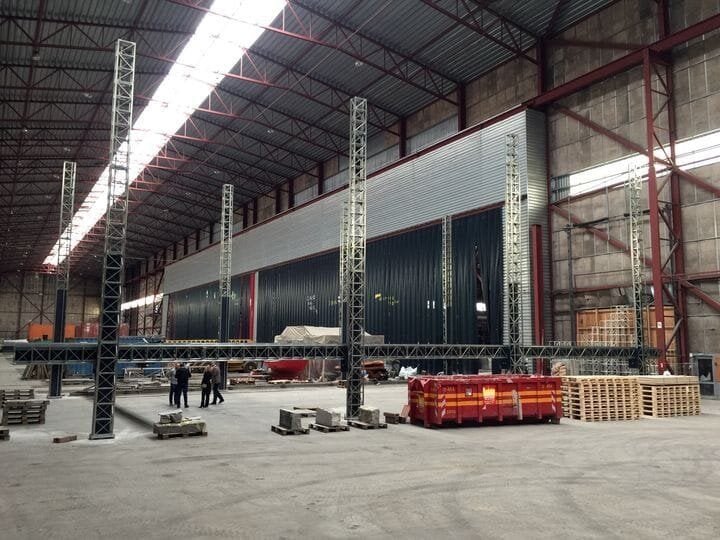![The enormous COBOD BOD2 construction 3D printer [Source:COBOD]](https://fabbaloo.com/wp-content/uploads/2020/05/image-asset_img_5eb08d1c2d90d.jpg)
COBOD published a video that reveals many more details about their enormous construction 3D printer, the BOD2.
If you’re not familiar with the concept, a construction 3D printer these days is essentially a large-format CNC concrete extruder, able to deposit concrete automatically on a build site or in a components factory. They don’t really “3D print a home in 24 hours”, as these machines do not (yet) handle anything other than concrete. Nevertheless, they are able to produce concrete structures with unusual geometries that would be challenging using conventional approaches.
BOD2 Construction 3D Printer
The Denmark-based COBOD has been not-so-quietly developing the BOD2 construction 3D printer and seems to have been quite successful thus far, announcing they’ve sold five units this far into 2019. They further suggest that they have won every EU public tender for construction 3D printers.
That’s all good news, but being the technical person I am, their new video is extremely interesting. It shows not only multiple views of the machine and its previously mysterious components, but also cites a number of machine specifications.
Here’s what I noticed from the video:
BOD2 Specifications
The BOD2 is truly enormous, and likely is the largest 3D printer of any type. COBOD says the build size can be as high as 10 meters (!), with 15 meters and length as long as you want. They say more than 45 meters is possible. That’s definitely large enough to 3D print buildings.
For such large prints, speed is important. To achieve high speed printing, the BOD2 uses a rather coarse layer size of 10-30mm, which is entirely suitable for building-sized prints. The nozzles are easily swappable to achieve differing layer sizes. COBOD says the device prints a 1 meter per second (!) and deposits around 3.6 cubic meters of concrete per hour.
BOD2 complies with all relevant EU regulations for safety, and apparently takes only eight hours to set up, with a four hour takedown duration. All electrical connections are certified for outdoor use. It requires two operators, however, who can monitor operations with two included cameras.
“Sausage Walls”
![The COBOD BOD2 construction 3D printer at work on a large, complex wall section [Source:COBOD]](https://fabbaloo.com/wp-content/uploads/2020/05/image-asset_img_5eb08d1c78e37.jpg)
A persistent issue with almost every construction 3D printer is the “sausage walls” problem, where the extrusion shape is a tube. Stacking layers of extruded tubes atop others results in the “sausage wall” appearance, which then requires post processing to smooth the wall to prepare for plastering.
That’s not the case with the BOD2 because it includes an ingenious flap that shapes the extrusion to have vertically flat sides. No sausages! However, this is directionally sensitive, and so BOD2 can rotate the flaps to ensure they are parallel to the current extrusion path.
COBOD Future
It’s clear that COBOD has put considerable engineering effort into the massive BOD2 construction 3D printer, and thus not surprising that it is winning public tenders. The company appears to be more successful than other fledgling construction 3D printer manufacturers, most of which do not seem to include as many features in their offerings.
One barrier COBOD is likely to face is that of acceptance. The construction industry is old and traditional, and will take considerable proof to persuade old-time builders to try the new technology. But that’s the same barrier the rest of the 3D printing industry has faced for years, so it is a known problem.
If COBOD continues to be successful, it is entirely possible COBOD may raise a significant investment by those believing this concept will become more popular in the future. If that occurs, then we may suddenly see this type of 3D printer on more building sites worldwide.

